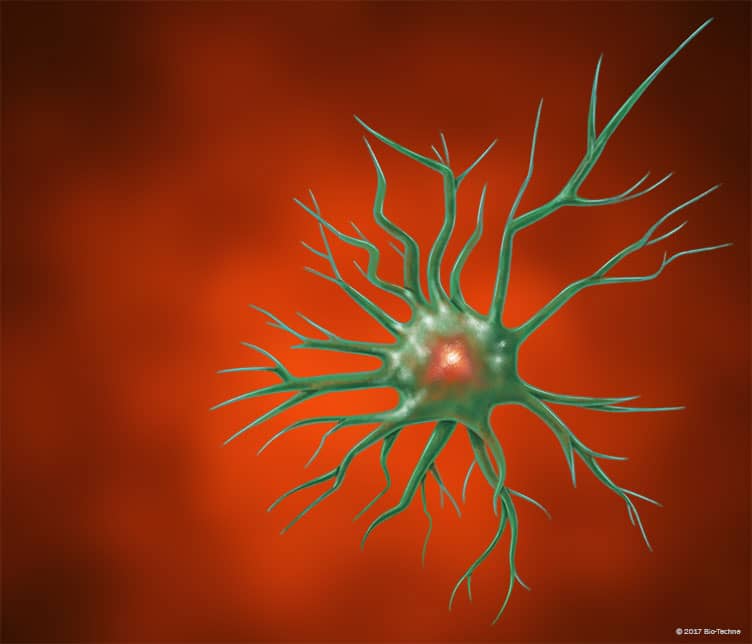Astrocyte Markers
This interactive graphic lists some of the most commonly used astrocyte markers including Glial Fibrillary Acidic Protein (GFAP), S100B, Glutamine Synthetase, the Excitatory Amino Acid Transporter 2 (EAAT2), also called GLT1, and Aquaporin-4. Clicking on a marker will take you to the R&D Systems selection of antibodies directed against that molecule. Clicking on a marker that is designated by (novusbio.com) will take you to the Novus Biologicals’ website and their antibody offerings for that protein.

Fluorescent Dyes
Fluorescent Dyes
Overview
Astrocytes are the most abundant glial cells in the central nervous system (CNS). They play critical roles in many CNS functions including clearing neurotransmitters from synapses, regulating ion homeostasis, controlling blood flow, and modulating synaptic function and remodeling. Astrocytes can also be activated in response to different kinds stimuli. CNS injury and disease induce astrocytes to undergo reactive astrogliosis, which involves both biochemical and structural changes to astrocytes. Reactive astrocytes can release either protective or neurotoxic proteins. As a result, reactive astrocytes can exert both detrimental effects, including neuroinflammation and neuropathologies, and beneficial effects, such as neural protection and repair processes, in the CNS following an insult.


